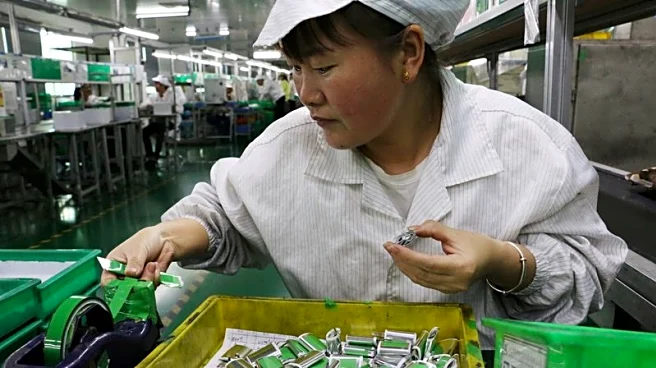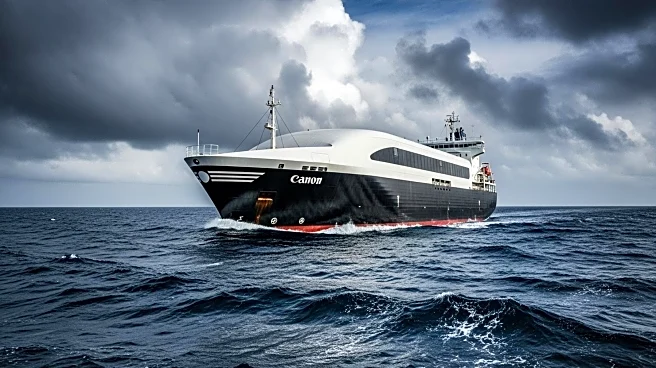What's Happening?
China and the United States have intensified their economic sanctions and export control measures as part of ongoing trade and technology negotiations. Recently, the U.S. imposed sanctions on several Chinese entities, including an independent refinery and terminal, for allegedly purchasing or shipping Iranian oil. In response, China expanded its export control regime, targeting rare earth production technologies, lithium battery production, and superhard materials. Additionally, China's Ministry of Commerce added 14 Western entities to its unreliable entity list, including U.S. firms in the drone industry. Analysts suggest that these actions are driven by geostrategic and military rivalry between the two nations, despite efforts to reach a bilateral trade deal.
Why It's Important?
The escalation of sanctions and export controls between China and the U.S. highlights the ongoing tensions in their trade relationship. These measures could have significant implications for global supply chains, particularly in industries reliant on rare earth elements and advanced technologies. The actions taken by both countries reflect their strategic interests and could influence the dynamics of future trade negotiations. The inclusion of Western entities in China's unreliable entity list may impact international business operations and partnerships. As the two largest economies continue to leverage economic measures, the global market may experience increased volatility and uncertainty.
What's Next?
Despite the recent sanctions, both China and the U.S. are expected to continue trade negotiations in pursuit of a comprehensive bilateral trade agreement. The ongoing dialogue may lead to further adjustments in economic policies and trade practices. Stakeholders in affected industries will likely monitor developments closely, seeking to adapt to changing regulations and market conditions. The geopolitical rivalry between the two nations may persist, influencing future economic strategies and international relations. Businesses and policymakers will need to navigate the complexities of this evolving trade landscape to mitigate risks and capitalize on potential opportunities.











